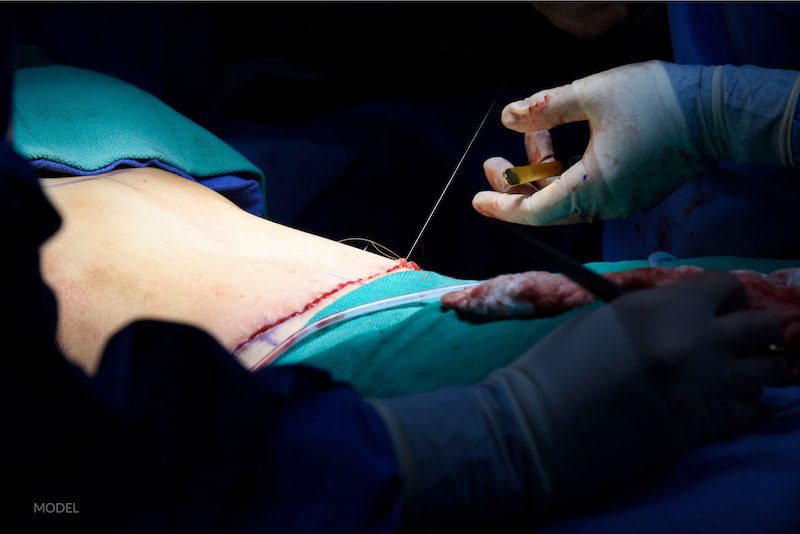Posted October 20, 2020 in Plastic Surgery Scars
2 Minute Read:
Scars occur on the skin as a result of trauma, either from wounds or surgery. Often the damage penetrates below the skin’s surface to the underlying tissue and fat. Scarring is the body’s strategy for sealing up the wound and healing the area.

What Causes Scarring After Plastic Surgery?
Any sort of tear or trauma to skin and body tissue will result in a scar, which is why scarring is so common after plastic surgery procedures, such as tummy tuck surgery or Mommy Makeover surgery. According to the American Academy of Dermatology, their appearance can vary—they may be raised, indented, or, in the best-case scenario, pretty much invisible.
Interestingly, scars in younger skin may be more prominent because the healing functions are on overdrive, whereas scarring of older skin has shown to be less visible.
What Are the Stages of Wound Healing?
There are three medical phases in the scarring process. The first involves inflammation. In this phase, the site of the wound is swollen, red, and tender to the touch.
The second phase is called proliferation. During this stage, collagen is being produced and layered within the wound. This causes the site to become red, rigid, and raised.
The third and final phase is called remodeling. Here, the body reduces the amount of collagen around the wound site, causing the scar to flatten and soften. This phase tends to last the longest—12 to 18 months—after which the scar is considered mature.
How Can I Minimize the Appearance of Scars?
There are several strategies for minimizing the appearance of scars.
For scars less than two years old, massage is recommended. You can do this yourself once your stitches have dissolved and scabs have fallen off naturally. Use the pads of your fingers and apply as much pressure as is comfortable. Be sure to massage in a circular direction, as well as vertically and horizontally. Doing this regularly for 10 minutes a few times a day should soften the scar tissue, making the scars less visible after healing.
Additionally, you can try to apply topical scar cream or silicone strips—these help lessen the coloring of the scar and hopefully prevent keloid or hypertrophic scars from forming.
What About Scars and Sun Exposure?
Another precaution to observe when it comes to scars is protection from the sun. Always use a high SPF sunscreen to prevent scar tissue from darkening.
Want to Learn More?
If you live in the Weston area and would like to know more about how to minimize the appearance of scars, old or new, don’t hesitate to get in touch with Weston Cosmetic Surgery Center. Dr. Charles Messa and his team would be more than happy to discuss products or techniques that can help. Call (954) 659-7760 or (877) 250-8117, or fill out the contact form to book a consultation.